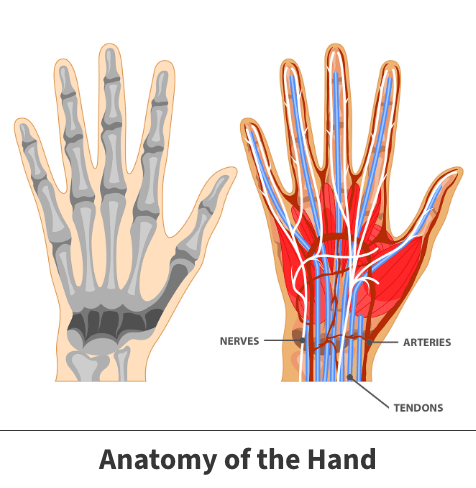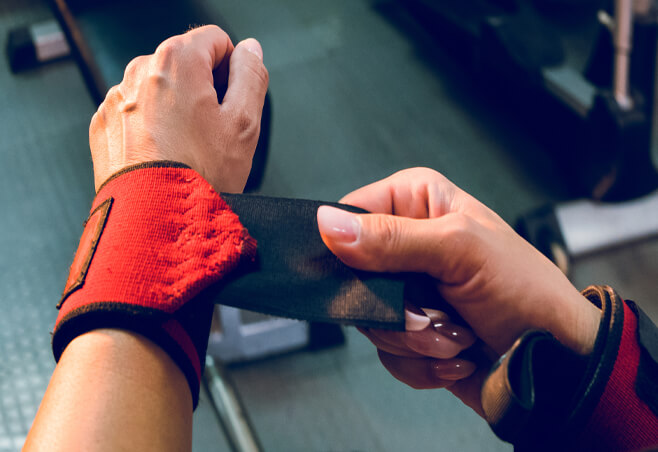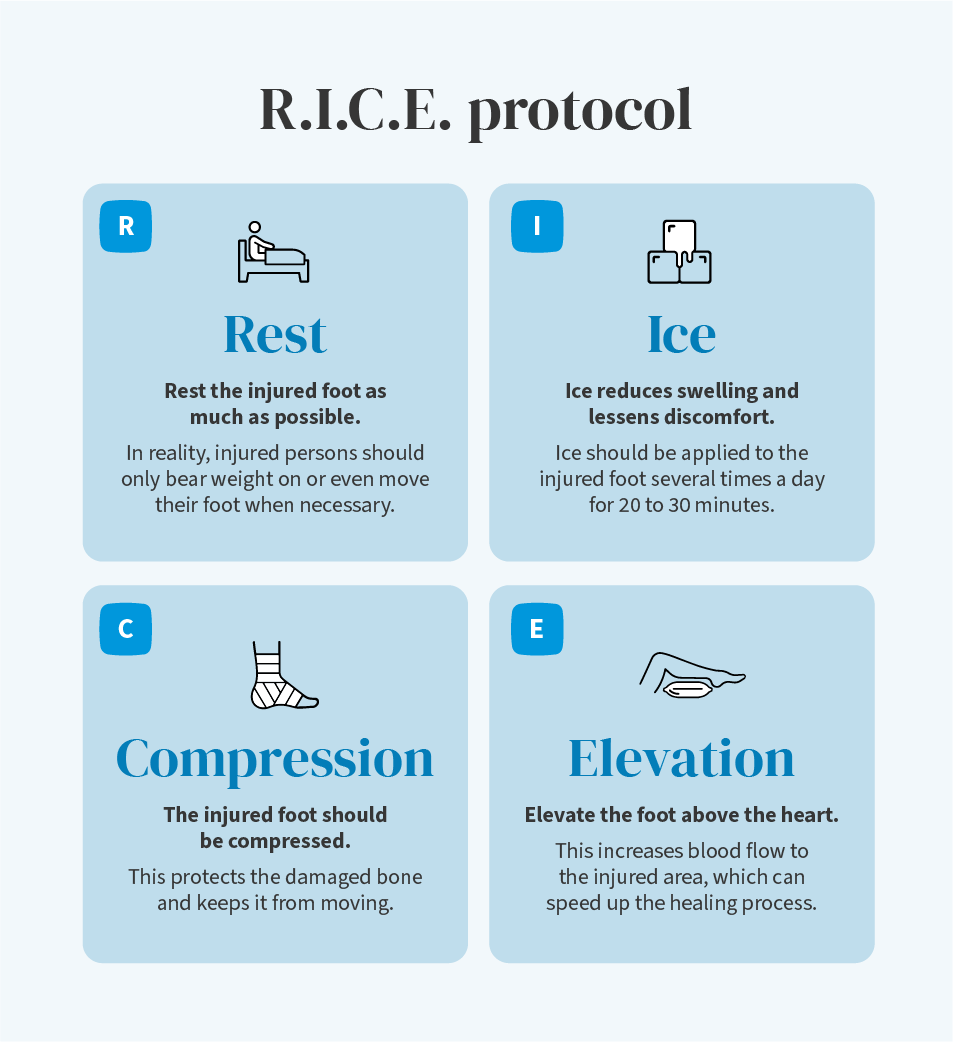Anatomy

The hands and wrists contain many bones. These structures are held together by soft tissues called ligaments.
About
Ligaments are strong and flexible. When overused, they can stretch too far or possibly even tear.
Wrist sprains are divided into three separate categories called grades.
Grade 1 – is the least severe and occurs when ligaments are stretched but not torn
Grade 2 – events happen when ligaments tear partially
Grade 3 – the ligaments completely tear or are detached from surrounding bones during occurrences
Causes
Sports that commonly result in sprains are those in which the wrist is used continually. The most common examples are racquet sports like tennis. But simply falling or twisting your wrist the wrong way can result in injury.
Common sports injury symptoms
Sprains
The most outward sign of a sprain is discomfort in the impacted wrist. Other occurrences might include:
- A popping or clicking sensation inside the wrist
- Swelling
- Bruising
- The feeling of warmth on associated skin
- Tender to the touch
Fractures
The symptoms you experience depend on where the fracture occurred and the event’s severity. Certain common symptoms include:
- Moderate to severe pain in the afflicted appendage.
- Bruising.
- Inflammation.
- Mobility problems.
In more severe instances, you might notice numbness and visible bone abnormalities.
Learn More About Wrist Fractures
Tendonitis
The most obvious symptom is pain. Because tendons are long and flexible, such discomfort may extend to other areas like your forearm or fingers. You might also have swelling and tenderness.
More serious occurrences may also produce mobility issues and weakness. Inflamed tendons sometimes impact neighboring nerves, which can lead to numbness.

Diagnosis
Sprains might mimic other potentially more serious injuries such as bone fractures. Seek immediate medical evaluation when displaying any of the symptoms.
Your doctor will likely first carefully examine your wrist for swelling and other abnormalities. Ligament damage is typically confirmed using imaging tools such as magnetic resonance imaging (MRI) or computerized tomography (CT scans).
Treatment
Treatment will depend on what grade your sprain is. Less severe events often respond to home care. Severe occurrences may need surgery.
Nonsurgical remedies
Grade 1 – sprains often respond well to a first-aid technique known as RICE: Rest, Ice, Compression, and Elevation. This treatment should be used as soon as possible after a sprain to relieve pain and swelling and promote healing and flexibility.
- Rest – Rest and protect the sore or injured area. Take a break, change, or stop any activity causing the pain or soreness.
- Ice – Cold reduces pain and swelling. Apply ice or a cold pack immediately to prevent and reduce swelling. Apply it for 10 to 20 minutes – three or more times a day. You can apply heat to the area if the swelling is gone after 48 to 72 hours. Never apply ice or heat directly to the skin – place a towel between the cold or heat pack and the skin.
- Compression – Wrapping the injured or sore area with an elastic bandage (such as an Ace bandage) helps decrease swelling. Don’t wrap too tightly, as this can cause swelling below the affected area. Check the wrap and look for signs that the bandage is too tight (numbness, tingling, increased pain, coolness, or swelling) in the area below the bandage. If the bandage gets too tight, loosen it. If you need to use compression for longer than 48 to 72 hours, contact your doctor to ensure there’s not a more serious problem.
- Elevation – Anytime you sit or lie down, raise the injured area with pillows while applying ice. If you can keep the area at or above the level of your heart, it will help reduce swelling.

Over-the-counter medications like non-steroidal anti-inflammatory drugs, often abbreviated as NSAIDs, can bring any associated swelling down and provide pain relief.
Grade 2 – events may necessitate placing your wrist inside stability-inducing gear like splints for specific timeframes.
Additionally, physical therapy may prove beneficial. If physical therapy is prescribed, you will perform specially designed exercises designed to recapture your injured wrist’s strength and range of motion.
Grade 3 – sprains often need surgery. Two types of operations are performed – re-attachment and reconstruction.
If possible, surgeons reattach the damaged ligament to the bone it is separated from. If the ligament is completely torn and beyond repair, a surgical team may construct a new ligament and insert it in place of the damaged tissues.
Related specialties
- Basal Joint Surgery
- Carpal Tunnel Syndrome
- De Quervain's Tenosynovitis
- Dislocated Finger
- Distal Radius Fracture (Broken Wrist)
- Dupuytren’s Disease
- Flexor Tendonitis
- Fractured Fingers
- Functional Nerve Transfers of the Hand
- Ganglion Cysts
- Hand & Finger Replantation
- Hand Nerve Decompression
- Hand Skin Grafts
- Nerve Pain
- Peripheral Nerve Surgery (Hand) Revision
- Revascularization of the Hand
- Rheumatoid Arthritis of the Hand
- Sprained Wrist
- Sudden Acute Finger, Hand & Wrist Injuries
- Targeted Muscle Reinnervation (TMR)
- Tendon Transfers of the Hand
- Thumb Ulnar Collateral Ligament Injuries
- Trigger Finger
- Ulnar Neuritis
- WALANT (Wide Awake Local Anesthesia No Tourniquet)
- Wrist Arthroscopy
- Wrist Fractures
- Wrist Tendonitis
